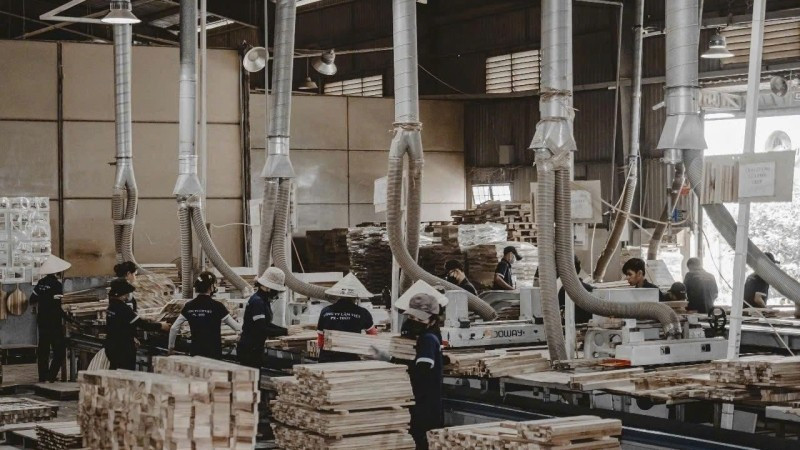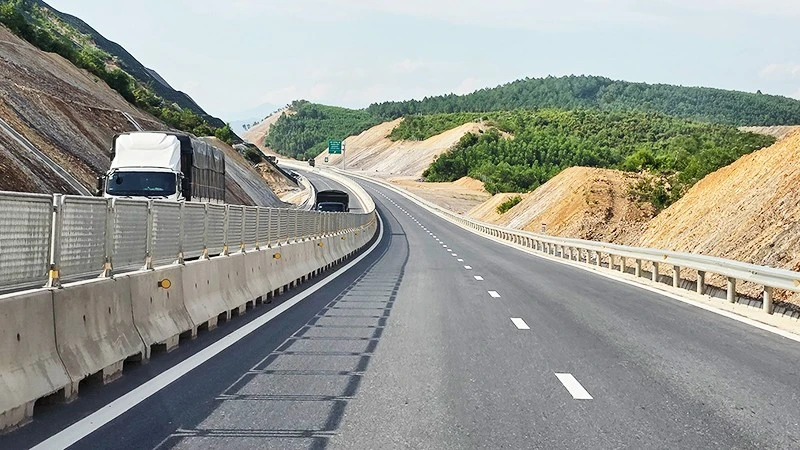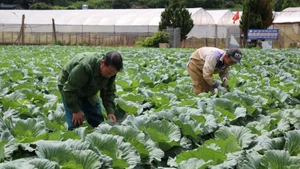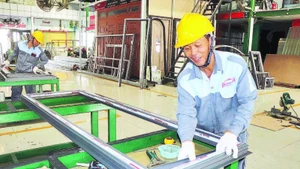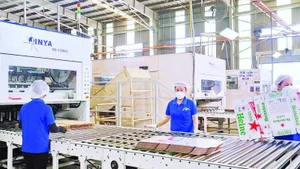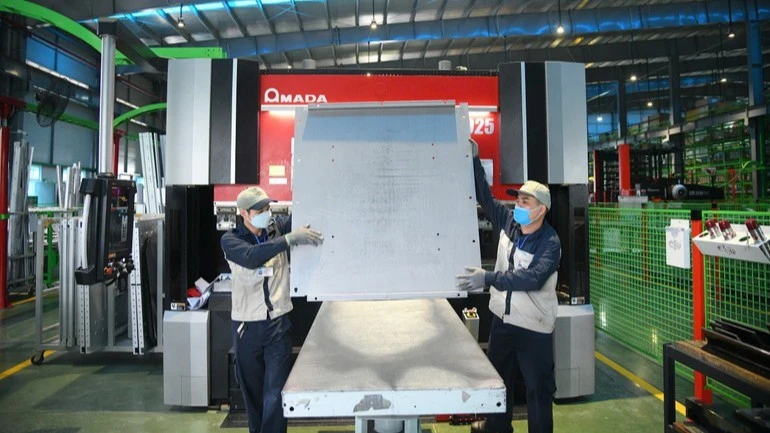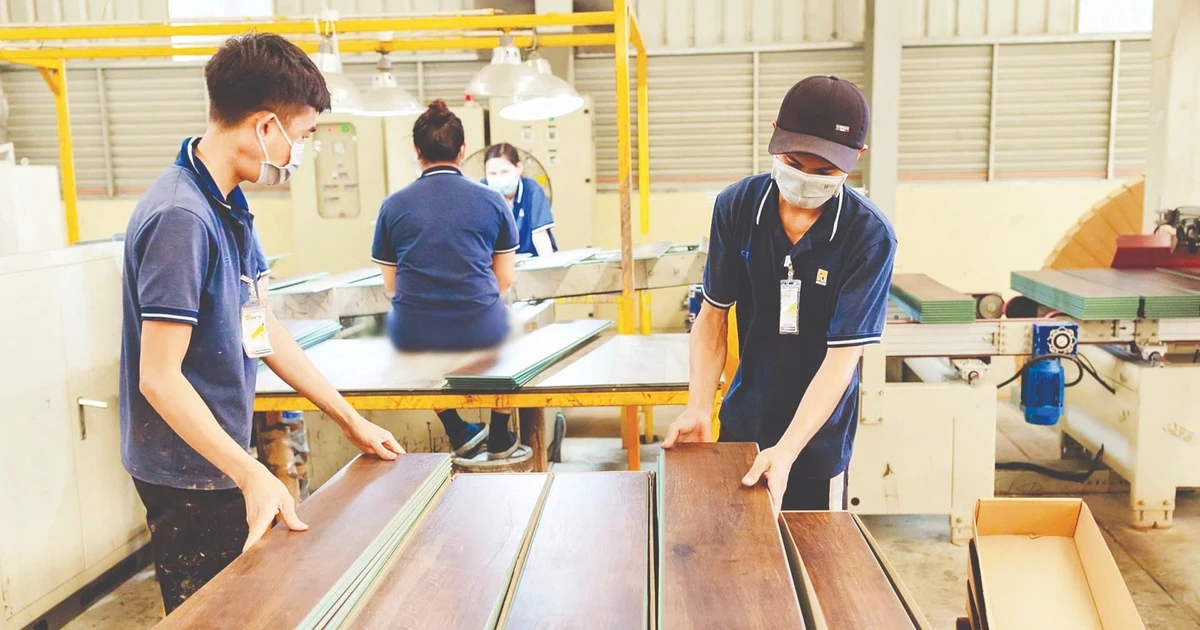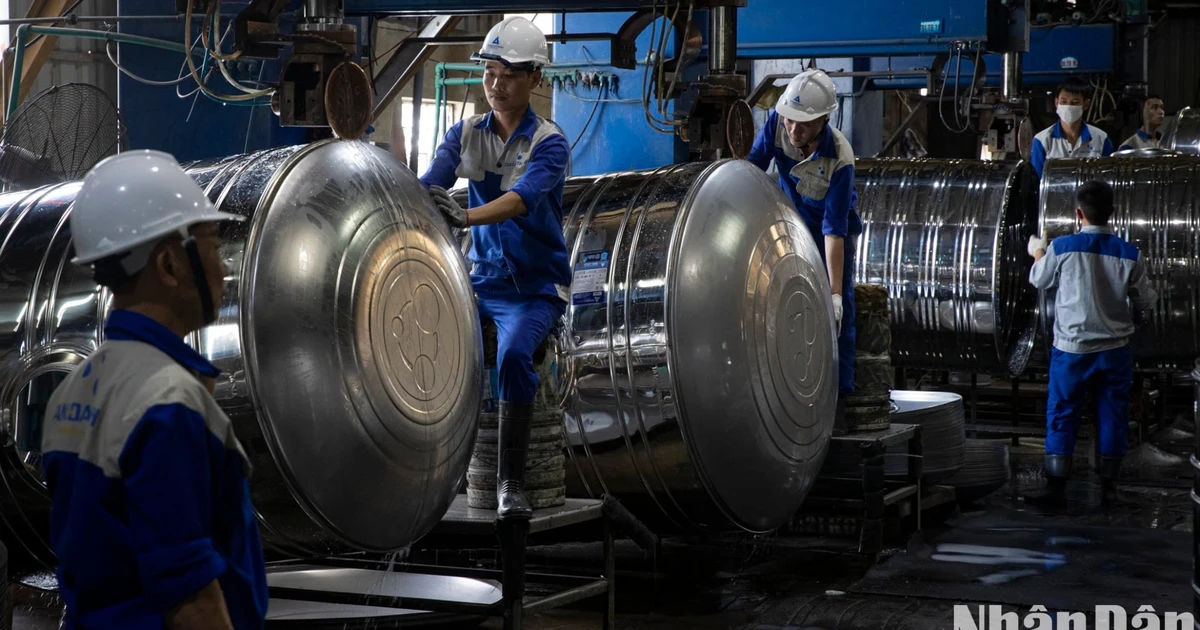Since the beginning of this year, the area of newly planted forests across the country has reached over 153,000 hectares, with timber output reaching 11.1 million cubic metres. Amid increasing trade defence activities, the Ministry of Agriculture and Environment is finalising policies to help timber enterprises stabilise production and strengthen supply chain controls.
Diversifying export markets and products
According to the Ministry of Agriculture and Environment, the export value of wood and wood products has reached over 8 billion USD since the beginning of the year, with the US being the largest market, accounting for 55.6% of the market share, followed by Japan and China with 12.6% and 10.4%, respectively. Ngo Sy Hoai, Vice President and General Secretary of the Viet Nam Timber and Forest Products Association (Viforest), noted that Viet Nam has become one of the world's leading timber product supply centres, ranking second only to China in furniture and home decor products.
This leading position, however, comes with increasing risks of anti-dumping, anti-subsidy, and anti-circumvention investigations, which could result in higher tariffs, reduced competitiveness, and difficulties in maintaining market share. There were 32 trade defence-related cases from 12 markets targeting Vietnamese exports in 2024 alone.
The Viet Nam Plywood Association currently has over 50 members exporting to markets such as the US, the Republic of Korea (RoK), and India. In the past, plywood faced trade defence investigations from the RoK and anti-dumping duties from the US. However, businesses continued exporting according to customers’ orders by preparing complete documentation to prove origin, production processes, and product pricing.
Trinh Xuan Duong, Chairman of the Viet Nam Plywood Association and Director of Ke Go Company Limited, stated that the plywood industry mainly encounters anti-dumping and anti-subsidy investigations. Currently, plywood products all use raw materials from domestically grown forests, harvested after five years, and benefit from low labour costs. Therefore, when anti-dumping investigations arise, plywood enterprises are able to provide full documentation to prove that product prices are appropriate. As soon as an investigation is announced, the association connects businesses and legal advisors to prepare relevant information and respond accurately to partners’ concerns.
In addition, timber enterprises must develop well-prepared measures, expand domestic plantation area codes, and comply with origin regulations for timber materials. Research into changes in material structure and production processes should be prioritised, with increased use of domestically planted timber to minimise dependence on imported raw materials and semi-finished products. Businesses must also enhance management and archiving of documentation on the origin of raw materials, ensuring transparency of information.
“Enterprises should work to increase export market share and expand into new markets, actively participating in international trade fairs to directly promote products and brands. Japan has strong demand for indoor wooden furniture and eco-friendly wooden living spaces. The RoK has a close proximity by sea and logistical advantages, but Vietnamese timber enterprises currently supply mainly wood pellets and low-cost plywood. Meanwhile, the EU, with 27 member countries and the EVFTA, accounts for just 3.8–4% of Viet Nam's total timber export value,” Ngo Sy Hoai emphasised.
Enhancing trade defence capacity for enterprises
According to general trends, the use of trade defence barriers to protect domestic goods is becoming increasingly common in the international market. In 2025, timber and forestry products will face more significant impacts than other sectors due to investigations into the effects of sawn timber imports on US national security. Viet Nam’s products in this category account for around 10% of total export revenue to the US. Increasing the use of domestic raw materials, diversifying inputs from markets not subject to trade defence investigations, and ensuring transparency of product origins will help mitigate risks for export sectors.
Tariff policies of importing markets remain a major challenge, requiring timber enterprises to make efforts to overcome difficulties by improving their risk management capabilities, strengthening their understanding of trade defence investigations, and actively building a sustainable value chain from raw material zones to processing and distribution. Currently, businesses are closely monitoring key trade defence trends in 2025, including new regulations aimed at increasing tariff levels, new protectionist trade defence rules, and broadly applicable measures such as safeguards or anti-circumvention policies.
Tran Quoc Bao from Thien Loc Import-Export Company said that in order to compensate for market share losses caused by trade defence measures in export markets, businesses are considering shifting towards domestic consumption and gradually seeking new markets. At the same time, they are studying trade defence regulations in export markets, particularly in countries that frequently conduct such investigations.
Trinh Xuan Duong, Chairman of the Plywood Association, said that trade defence should be considered an inevitable reality. Businesses need to connect and share information with one another to jointly respond. Furthermore, international legal understanding remains a weakness for many companies. Therefore, the Trade Remedies Authority and relevant associations should support businesses in understanding legal frameworks and implementing appropriate solutions.
The Department of Forestry and Forest Protection under the Ministry of Agriculture and Environment is currently working with industries and associations to assess the impact of trade defence measures. This includes the entire process, from sourcing raw materials to certified timber zones with approved plantation codes. The aim is to prevent inaccurate information declarations and stop acts of origin fraud and illegal transshipment.
Major importing markets are increasingly demanding traceability of legally sourced timber. Therefore, building a sustainable, transparent supply chain and complying with legal timber origin requirements will be essential conditions for sustainable timber exports in the future.
Enterprises exporting timber and forest products need to prepare legal documentation to prove the lawful origin of raw wood materials certified by FSC or other clearly legal sources. They should also be ready to demonstrate production processes and raw material areas when facing allegations of tax evasion or dumping.
Viet Nam has recently been listed by the European Commission as one of the “low-risk” countries for deforestation. This is a significant advantage for Vietnamese timber and forest product exporters to the EU. Products such as coffee, rubber, and timber will undergo simplified verification procedures, with a compliance inspection rate of just 1%.
